
Catalog excerpts

Turbulence Turbulence Handbook for Experimental Fluid Mechanics Professionals
Open the catalog to page 1
Release 1.1 This Handbook may not be copied, photocopied, translated, modified, or reduced to any electronic medium or machine-readable form, in whole, or in part, without the prior written consent of Dantec Dynamics. Date: September 2012. Copyright 2009–2012 by OPTEK, Caslavska 9, 130 00 Praha 3, Czech Republic, Prof. Vaclav Uruba Parts Copyright 2012 by Dantec Dynamics A/S, Tonsbakken 16-18, DK-2740 Skovlunde, Denmark All rights reserved. To allow for design and specification improvements, the information in this document is subject to change at any time, without notice. This...
Open the catalog to page 3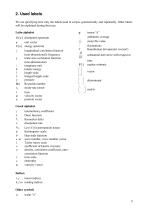
We are specifying here only the labels used in scripts systematically and repeatedly. Other labels will be explained during their use. Latin alphabet D (k) dissipation spectrum f longitudinal correlation function (non-dimensional); frequency g transverse correlation function (non-dimensional) i imaginary unit L Integral length scale tensor “a” arithmetic average mean file value fluctuations Hamiltonian del operator (vector!) substantial derivative with respect to time regular estimate Greek alphabet intermittency coefficient Dirac function Kronecker delta dissipation...
Open the catalog to page 9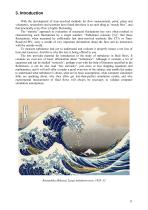
3. Introduction With the development of time-resolved methods for flow measurement, point, plane and volumetric, researchers and scientists have found that there is no such thing as “steady flow”, and that practically every flow is highly fluctuating. The “statistic” approach to evaluation of measured fluctuations has very often resulted in characterizing such fluctuations by a single number, “Turbulence intensity [%]”. But these fluctuations, when measured by sufficiently fast time-resolved methods, like CTA or TimeResolved PIV, carry a wealth of very important information about the flow...
Open the catalog to page 11
Introduction to the study of turbulence Equation Section 3 The flow of water in the river, clouds in the sky, burning flames, the starry universe – these are some examples of phenomena that we can label as turbulent. Turbulence has always been a fascinating phenomenon for people, even though (or indeed because) it is difficult to grasp, due to its variability and complexity. Ever since ancient times, thinkers have attempted to come to terms with the existence of turbulence, and this effort continues to this day. The process of recognizing the laws of turbulence has not been finished. It has...
Open the catalog to page 12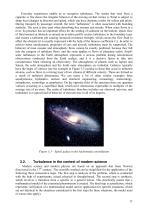
Everyday experiences enable us to recognize turbulence. The smoke that rises from a cigarette or fire shows the irregular behavior of the moving air that carries it. Wind is subject to sharp local changes in direction and speed, which can have dramatic results for sailors and pilots. During transport by passenger aircraft, the term “turbulence” is often associated with buckling seatbelts. The term is also used when describing free streams and streaks. When water flows in a river, its presence has an important effect for the settling of sediment on the bottom. Quick flow of fluid around an...
Open the catalog to page 13
The issue of turbulence somehow did not fall into the concept of science as defined by Newton, and the behavior of objects during a state of turbulence was not predicted reliably. In the past, turbulent behavior was often associated with magic, and to this day this issue is engulfed by a veil of secrecy. This problem has been dealt with systematically by a large number of scientific experts (see the addendum for a detailed overview), but practically all identified individuals involved in the study of physics have examined this problem at least to a certain extent. It is said about the...
Open the catalog to page 14
The flow of fluids can be qualitatively characterized as laminar or turbulent. Laminar flow is typically either a very slow motion or involves a level of viscosity. Fluid particles move evenly and slide across each other in layers (lamina is Latin for layer, plate), and are therefore laminar. However, turbulent flows (turbulentus is Latin for uneven) are characterized by quick motion or a low effect of viscosity, when even minor perturbations in stream grow uncontrollably and cause unpredictable local behavior of fluid and intensive eddy mixing in the whole area (a more exact definition of...
Open the catalog to page 15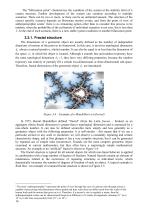
The “bifurcation point” characterizes the condition of the system at the stability limit of a certain structure. Further development of the system can continue according to multiple scenarios. There can be two or more, or there can be an unlimited amount. The selection of the correct specific scenario depends on Brownian motion events, and from the point of view of anthropomorphic scales5 there is no remaining option other than to consider this process to be random, when the probability of the realization of individual scenarios is not zero, but is less than 1. At the end of each scenario,...
Open the catalog to page 16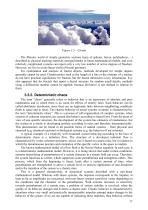
Figure 3.5 – Clouds The Platonic world of simple geometric sections (type of spheres, boxes, polyhedrons,…) described in classical teaching materials emerged thanks to linear mathematical models, and even relatively complicated systems can report only a very low number of active degrees of freedom. However, we live in a non-linear world of fractal geometry. For examination and analysis of fractal objects, methods developed for simple objects generally cannot be used. Characteristics such as the length of a line or the contents of a surface do not have practical significance for fractals,...
Open the catalog to page 17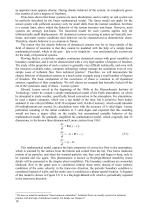
an apparent cause appears chaotic. During chaotic behavior of the system, its complexity grows (the number of active degrees of freedom). It has been shown that linear systems are mere idealization, and in reality no real system can be perfectly described by the linear mathematical model. The linear model can apply for the actual system with sufficient accuracy only for small shifts from the normal condition, but there is a certain limit, above which the behavior of the system becomes non-linear. However, most systems are strongly non-linear. The linearized model for such systems applies...
Open the catalog to page 18All Dantec Dynamics A/S catalogs and technical brochures
-
F-Q-480
2 Pages
-
F-Q-400TCT
2 Pages
-
Q-400 μDICTM
2 Pages
-
5 Beam 112mm probe
2 Pages
-
LabVIEW Toolbox for CTA
2 Pages
-
Least Squares Matching (LSM)
3 Pages
-
DynamicStudio Base Package
5 Pages
-
Flow Field
8 Pages
-
HiSense 600 series
2 Pages
-
FlowSense EO
4 Pages
-
HiSense Zyla
2 Pages
-
ComfortSense Mini
4 Pages
-
DISATAC Tachometers
56 Pages
-
Laser Doppler Anemometry
8 Pages
-
Probes for hot-wire anemometry
25 Pages
-
FlowExplorer compact LDA
2 Pages
-
DynamicStudio
8 Pages
-
Spray Diagnostics Solutions
8 Pages
-
Wind Turbine Optimization
8 Pages
-
Laser shearography (Q-800)
2 Pages
-
Q-501 Real Time Mode Monitor
2 Pages
-
PDA systems
8 Pages








































